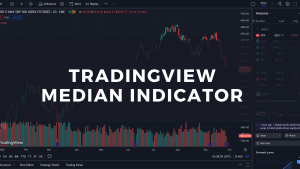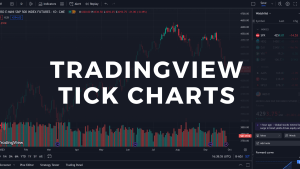This article on High Frequency Trading is the opinion of Optimus Futures
It’s tempting to think of low-latency day trading and High Frequency Trading (HFT) as two approaches existing on the same plane, separated only by degrees of speed. But the two differ not in degree, but in kind. The term “high frequency” denotes trading frequency, but more importantly, it implies technologically driven speed. But in use, the term, when applied to both retail trading and institutional trading, splits into two separate definitions: one denotes speed (retail trading) while the other implies a set of strategic approaches.
Let’s break this down. Day trading consists of frequent actions based on short-term speculation. You anticipate the market moving in a given direction, place a trade for a small profit, and repeat.
HFT, if we were to refer to it as an algorithmically based institutional practice, is almost anti-speculative. Much of it has to do with exploiting price discrepancies between instruments, exchanges (e.g. dark pools) and order flow. The object is often not to guess market direction but rather to exploit fleeting inefficiencies or discrepancies between orders and prices.
- In the realm of pure transaction, both types of futures traders are competing against one another, with day traders seeking to profit from the same one or two ticks that a competing HFT firm may also be after.
- But in the realm of strategy, low-latency futures traders and HFT firms operate in two qualitatively separate worlds, like apples and oranges, employing tactics that have very little to do with one another. Hence, the two are virtually non-competitive from a strategic standpoint.
Speculation vs Non-Speculation
The futures day trader speculates on the movement of price, hoping to capture a few tick’s profit. He or she tries to get an edge based on technical data to draw a high-probability hypothesis as to where price might go within a relatively short time frame. If the trader is correct, then he may be able to capture a short-term profit. The day trader then repeats this model several times within a given trading session (hence, the high frequency).
The HFT practitioner is a different beast altogether. She often seeks to avoid the kind of speculation that the day trader typically engages, seeking instead to profit off data that may be unavailable to or unexploitable by most of the retail trading or investing crowd.
Just a few examples:
- In the equities trading world, many HFT firms use computer-driven speed and geographical proximity to gain an edge while participating in one or several “dark pools,” private exchanges inaccessible to retail traders. Hence, HFT firms can place trades based on private bids and asks that may be lower or higher than exchange prices. HFT practitioners can then sell their shares to retail investors at a profit. It’s an order-flow game, one whose risks typically don’t concern market direction (unlike the retail trader) but rather the ability to arbitrage private trade flow (e.g. a bank’s Dark pool) against orders that appear on transparent exchange, like the NYSE.
- In futures trading (and perhaps equities as well) HFT firms often engage in the arbitrage of price inefficiencies. For example, the average basis between the EUR/USD and the 6E and the EUR/USD and the M6E might be off by a few basis points, amounting to a few ticks. An HFT firm with adequate speed and plenty of capital may be able to identify that discrepancy and “correct” the basis by going short one contract and long another in a matter of milliseconds. This is a far cry from the day trader who is speculating that the 6E or M6E might move up or down a few ticks.
- In both examples above, HFT concerns trading “what’s known and apparent,” exploiting this scenario with incredible speed and lots of capital. In contrast, day trading concerns “what’s not known,” and trading a probable movement based on technical or fundamental analysis.
So, the day trader is relegated to the realm of speculation, where he or she operates best, in competition not against HFT firms but other day traders.
High Frequency Trading for the Retail Crowd
Although the HFT world may differ in kind from that of the short-term retail trader, retail traders can comparatively compete in the high frequency realm against other retail traders.
When engaged in short-term trading, there are only two areas in which speed becomes a competitive factor: speed of analysis and speed of execution. Being quick to analyze but slow to execute may be similar to being slow to analyze and quick to execute. Let’s see how speed and technology may apply to retail futures trading.
Algorithmic Analysis of Data
Possessing or developing an algorithm that can accurately identify and analyze certain market conditions such as market patterns, inter-market correlations, fundamental data, and other metrics might give you a significant edge over traders who have to manually seek and analyze these data points on their own.
Imagine this hypothetical scenario:
- Trader A manually looks for 1-2-3 patterns on a 5-minute chart across multiple futures instruments.
- Trader B, on the other hand, has an algorithm that alerts her when 1-2-3 patterns occur throughout 1-minute to 1-hour charts across virtually all futures instruments. In addition to this, her algorithm analyzes the probability of success for each trade based on trend and volume.
- Clearly, Trader B might have an edge over Trader A in terms of analytical speed alone.
Algorithmic Execution
Possessing or developing an automated execution algorithm may allow you to take advantage of more trading opportunities than the manual trader (though there is a risk in allowing a computer to make trading decisions for you–the algorithm has to be based on very solid trading and risk management principles).
Another hypothetical scenario:
- Trader B above is able to identify 1-2-3 patterns across multiple instruments and time frames.
- Trader C has the same algorithm but his algo can also execute trades across multiple exchanges and accounts, unlike Trader B who still has to execute the trades manually. In addition to this, Trader C’s algo has a risk management feature that can assess both leverage risk and account risk across all his accounts at once, warning him when his total risk reaches an unfavorable point in relation to total market volatility.
- Clearly, Trader C has an edge over Trader B.
Co-Location
When exploiting trading opportunities, having the right futures trading software might help you analyze markets much more quickly. But when it comes to execution speed, particularly if you trade high volume on a per-trade basis, co-location functionality might give you an additional edge.
Continuing our comparative hypothetical scenario…
- Trader C above is able to analyze markets and execute trades with the help of algorithms.
- Trader D has the same set of technologies, but she uses high-frequency trading software that routes order to co-located servers that are much closer to the various exchanges where her orders are filled.
- Let’s suppose that both trades roughly between 100 to 200 contracts per trade and that both traders are placing the same exact trades for most of the day.
- Although the fill-rates would be difficult to measure, you might want to ask yourself whether Trader C or Trader D might have the edge in terms of low-latency execution.
Is HFT an Obstacle to Futures Trading?
Institutional HFT exists on a whole different plane from that on which low latency day traders operate. So, if a day trader tries to arbitrage price and order flow in the same way that an HFT practitioner might, then yes, HFT will not only be a formidable competitor, it will likely always be the winner.
But if day traders compete within the speculative domain that defines their practice, then HFT shouldn’t be much of a concern. HFT practitioners may get the fill faster, but at this point, their actions are more of a necessary inconvenience than a competitive threat. You and all other low latency futures traders just have to deal with. The mark of HFT activity has now become part of the landscape. And unless you plan to call it quits, you need to adjust your practice in a manner that may be less impacted by high-volume and high frequency orders.
Besides, there is no way you might be able to tell whether your trade was impacted by an HFT practitioner, other traders like yourself, or just pure chance.
There is a substantial risk of loss in futures trading. Past performance is not indicative of future results.
















